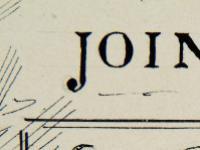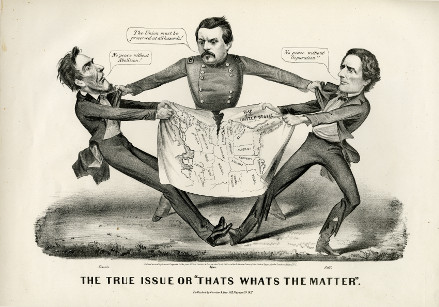It's an old adage that a picture is worth a thousand words, but in the Internet age, how do you make those "words" meaningful and searchable in Google? This question is at the heart of a new two-year project HSP has undertaken to enhance description and discovery of its graphics materials and promote the linking and sharing of content among institutions and scholars. Known as the "Historic Images, New Technologies (HINT)" project, this work is funded by a grant HSP recently received from the National Historical Publications and Records Commission’s Innovation in Archives and Documentary Editing program.
The primary goals of the HINT project are to improve HSP’s ability to manage and describe its digitized images and provide other libraries, archives, and museums with tools and strategies to increase discoverability of their own graphics items. To this end, HSP will develop a sophisticated image tool, based on our existing Digital Library viewer, with the ability to create and display TEI (Text Encoding Initiative) annotations. While predominately used for manuscript materials, TEI markup allows for sophisticated description, searching, and annotation with the potential to enhance the discoverability and understanding of graphics items. As visual materials are annotated with TEI, users who browse these collections will be able to search for images on specific topics, analyze images in depth, and follow links between images and related contextual material, thus allowing complex graphics materials to be discovered and read in more meaningful ways. In this regard, the HINT project will build upon two of HSP's previous digital history projects, Closed for Business and Preserving American Freedom, which display digital facsimiles of textual material alongside transcripts encoded in TEI and provide users with important contextual information about the documents.
HSP project staff will demonstrate these new avenues of accessibility through digitization of 500 political cartoons. These cartoons will span from the late 1700s to 1923 and will cover a range of topics and political themes, including the struggles of the colonial United States, the Civil War, and local Philadelphia politics. These images will be encoded in TEI and will ultimately contain clickable “zones” that will allow users to access pop-up text giving contextual information about the people, places, and issues contained in each cartoon. These images and annotation will be available in our Digital Library and in a separate exhibit site, similar to the previous digital history projects linked above.
Keep following this blog for project updates!
[this blog post was co-written by Hillary Kativa]


